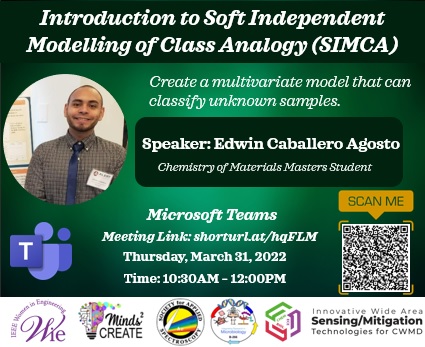DHS ARI IWAS introduced its 12th webinar on March 31, 2022 teaching undergraduate and graduate students about the Soft Independent Modelling by Class Analogy (SIMCA) model used for classifying samples.

Soft Independent Modelling by Class Analogy (SIMCA) is a statistical method that is used to classify data into different groups or classes. SIMCA is a type of partial least squares (PLS) method, which means that it uses a linear regression model to fit the data. The main advantage of SIMCA is that it allows for “soft” classification, which means that data points can belong to multiple classes with different probabilities. This can be useful in situations where the data is not cleanly separated into distinct classes, and where there is overlap or uncertainty in the classification.
SIMCA is commonly used in chemometrics, which is the application of statistics and mathematics to chemistry. It is particularly useful for analyzing spectral data, such as infrared or Raman spectra, where there may be multiple classes of molecules that produce similar spectra. SIMCA can help researchers to identify the different classes of molecules in the data, and to determine the relative proportions of each class. It can also be used to predict the class of new samples, based on their spectral data. Overall, SIMCA is a powerful and flexible tool for classifying data, and can be useful for researchers in a variety of fields.






